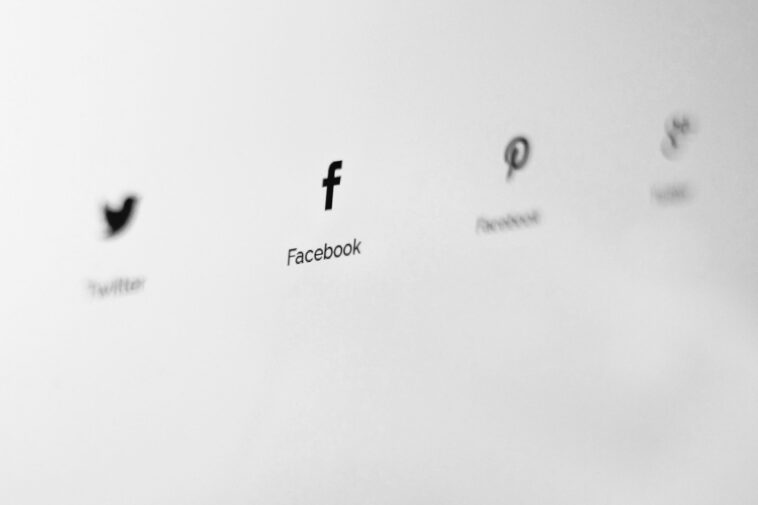If you’re selling a digital product—like an ebook, online course, downloadable template, or membership—you already know how tough it can be to get people to see it.
The internet is full of noise. And even when you create something useful, getting it in front of the right people takes real work.
That’s where Facebook ads come in.
With over 3 billion monthly active users across Facebook and Instagram (which Facebook owns), it’s still one of the best places to advertise your digital products. You can target specific people based on interests, behavior, age, location, and more.
But here’s the thing: most people lose money on Facebook ads because they don’t know how to do it right.
I’ve seen it too many times—creators and small business owners spending $100, $500, or even more without making a single sale. Not because their product was bad, but because their ad strategy was off.
So, in this post, I’m going to break it all down for you—step by step—so you can advertise your digital product on Facebook without throwing money away.
Step 1: Know Your Audience First
Before you even open Facebook Ads Manager, the first step is to know exactly who you’re trying to reach.
Ask yourself:
Who will benefit the most from my product?
What problem does it solve?
What are they doing online when they’re not looking for my product?
If you’re selling a productivity course for freelancers, your audience might include graphic designers, writers, and digital marketers aged 25–45. They’re likely interested in tools like Notion or Trello, follow pages like HubSpot or Fiverr, and watch productivity videos on YouTube.
When you know your audience like this, targeting them with Facebook ads becomes easier—and cheaper.
Step 2: Set Up Your Facebook Business Manager
If you haven’t already, go to business.facebook.com and create a free Business Manager account. This gives you full access to:
Ads Manager (to run your campaigns)
Pixel (to track conversions)
Custom Audiences (to target website visitors, email lists, and more)
Make sure your Facebook page, Instagram account, and payment method are linked properly. This setup takes a bit of time, but once it’s done, you’re good to go.
Step 3: Install The Meta Pixel On Your Website
The Meta Pixel (formerly Facebook Pixel) is a little piece of code that tracks what people do after clicking your ad. Without it, you can’t tell if someone bought your product, signed up for your free guide, or bounced right away.
You can install the Pixel on most websites, including:
WordPress (using plugins like PixelYourSite)
Shopify (under Preferences → Facebook)
ClickFunnels, Kajabi, and other digital product platforms
If you’re not sure how to do this, here’s Facebook’s step-by-step guide.
Step 4: Create A Simple Funnel (This Is Key)
Don’t just run ads straight to your product page, especially if it’s a cold audience (people who don’t know you yet). Instead, use a simple two-step funnel:
Lead Magnet → Email
Offer something free: a checklist, ebook, sample, or short video
Collect their email using a landing page (use tools like MailerLite, ConvertKit, or Mailchimp)
Email → Product Offer
Send 3–5 short emails over a few days
Teach, build trust, and then pitch your paid digital product
This approach warms up your audience. It costs less, builds your email list, and increases your chances of making a sale.
Step 5: Build Your Ad
Now let’s talk about the ad itself.
Here’s a basic structure that works:
Headline:
Clear, short, and focused on a benefit.
“Make More Time in Your Day with This Free Planner”
“Learn How to Design Logos That Clients Pay For”
Primary Text (the main part):
Use casual, natural language. Keep it short. Start with a hook, explain the value, and invite them to click.
Example:
You’re busy. I get it. That’s why I created this 7-day Productivity Playbook—free for freelancers who want to get more done in less time. Just drop your email and I’ll send it to you.
Call To Action (CTA):
Use Facebook’s CTA buttons like “Download,” “Learn More,” or “Sign Up”. Choose one that matches your offer.
Visual:
Use an image or short video that’s clear, relevant, and looks native to the platform. Avoid anything that looks too “ad-like.” Tools like Canva are great for this.
Step 6: Target The Right People
Start with interest targeting.
If you’re selling a Canva template pack for content creators, you could target:
People interested in “Canva,” “Social Media Marketing,” “Instagram for Business”
Age range: 18–45
Platforms: Facebook and Instagram
Then as your Pixel collects data, you can build lookalike audiences (people similar to those who already bought or visited your site). You can also create custom audiences using:
Your email list
Website visitors
Video viewers on Facebook/Instagram
Step 7: Set Your Budget (And Don’t Burn Cash)
You don’t need $1,000 to get started.
Try this:
Campaign Budget: $5–$10/day
Run 2–3 versions of your ad (different headlines, images, or texts)
Let it run for 3–5 days before judging results
Check the Cost Per Lead (CPL) or Cost Per Purchase (CPP) and see which version is working. Kill the low performers. Scale up the winners.
If $10/day feels like a lot, just know that small budgets can still go far with the right targeting and message.
Step 8: Track Results And Improve
Use Facebook Ads Manager to track:
Click-through rate (CTR)
Conversion rate (signups or purchases)
Cost per result
You’ll never get it perfect on day one. The key is to test, learn, and improve over time. The best advertisers are just really good at tweaking things until they work.
FAQs
Can I advertise without a website?
Yes, you can use Facebook lead forms or platforms like Gumroad or Ko-fi, but having a landing page gives you more control and tracking options.
How much should I spend per day?
Start small—$5 to $10/day. Focus on learning before scaling.
What type of digital product works best?
Anything that solves a real problem: ebooks, courses, templates, design packs, toolkits, etc. Niches like business, self-improvement, and design perform well.
How long does it take to see results?
You can start seeing sign-ups or sales within a few days, but full results usually come after a week or two of testing and refining your ads.
Final Thoughts
Facebook ads are still one of the best ways to grow your digital product sales, even with rising competition.
The trick is not to rush it. Set things up right, speak directly to your ideal customer, and focus on building trust—both with your audience and with the platform’s algorithm.
And remember, you don’t need to be a marketing expert to run successful Facebook ads. You just need a product people want, a message that connects, and a little patience to test and tweak.
What’s your biggest challenge when it comes to advertising your digital product on Facebook?





GIPHY App Key not set. Please check settings